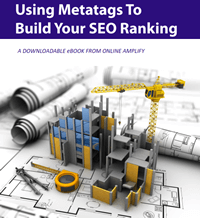
How do I update my business listing on Google?
When a prospective client searches for your business online, one of the key results on Page 1 is your business listing on Google. Whether that listing is complete and credible may be the difference between a new client and a missed opportunity. Your Google Business Profile (previously known as Google My Business) is an essential component of a local SEO strategy. Optimizing your Google Business Profile will showcase your business in a Google Search. An up-to-date, comprehensive profile can improve your findability in a local search, drive traffic to your website and bring in new customers. This free downloadable reference guide covers steps to create or claim your profile, key fields to complete and recommended ongoing activities for success.
What is search engine optimization?
Search engine optimization (SEO) is a collection of actions intended to attract the attention of search engines in order to rank (appear) in the search results pages. Search engines use complex, multi-faceted algorithms to determine which sites (and which pages) appear in organic (unpaid) search results. SEO is not a quick effort or a one-time activity, but rather is an ongoing process to grow visibility online, and it includes both on-page (website) and off-page (outreach) activities. Learn more in our blog articles about search engine optimization.
What should I blog about?
Blog about topics that are likely to be of interest to your potential clients, partners and industry peers. Consider timely or seasonal topics as well as news or events. Share case studies that illustrate your offerings and resonate with potential customers. Offer useful, informative or entertaining content that is not readily available on other sites, and don’t be afraid to offer a viewpoint. Your website analytics content section provides also insights to the subject matter your visitors are interested in. This post may help generating blog ideas.
What is a mobile responsive website?
A mobile responsive website adjusts the information on a web page to accommodate the device it’s being viewed on. For example, a website page that has four columns of copy and rotating header images may display the text on a tablet with two columns and two rows. On a phone, the rotating header images may display stacked rather than rotating. In many cases, a tablet or mobile website version omits some of the content on the full desktop site. Sites that are not mobile-responsive require scrolling and zooming to magnify tiny text and are penalized by search engines. Learn more about mobile responsive websites.
Should I create a Facebook page for my business?
Social media offers a powerful medium to share your expertise and increase your visibility. The platforms you select should be based on your industry, target clients and partners. Consider the demographics of your customer and where he or she spends time online; Facebook, Instagram, LinkedIn, Twitter and Pinterest all cater to different audiences. Your customer may love Pinterest but prefer to receive business information on LinkedIn – or via email. Regardless of which social platforms you use for your business, it’s important to maintain a regular cadence, pay it forward and engage with others — social media is social.
How long should my blog posts be?
If you Google this question you’ll get pages and pages of results with widely varying opinions. Written posts should be somewhere between 250 and 2500 words. While longer posts may help your placement in search results, many readers abandon before completing an article. In recognition of today’s time-starved typical reader, I target 500-700 words per written post. However, some posts may be shorter or longer. Rather than focusing on length, craft concise, well-disciplined and honed content that informs, assists or entertains readers. Blog articles don’t have to be just the written word, either — be creative.
How do I sell my products online?
When starting out, many sellers rely on marketplace platforms like Etsy or Amazon Marketplace to sell their products. With the infrastructure in place, these platforms have already integrated the many necessary elements, including a shopping cart engine, secure credit card processing, storefront templates, shipping options and search filters. If you’re selling services or a limited number of products, a simple PayPal purchasing option on your website may be sufficient. To launch an online store, first secure sufficient inventory and arrange for order fulfillment. Then you’ll select a shopping cart engine and build out your online store with robust product images and descriptions, pricing, shipping and policies … following eCommerce best practices.
How do I build my website?
While there are many free platforms for website creation, there are innumerable benefits to hiring a professional website developer to create your website. For starters, your website is the online face of your business, and you want it to create the best possible impression. Generally, free DIY templates are limited in both design and functionality. Rely on the experience of those who have been there before and let the experts guide you. Most sites are built on content management systems such as WordPress, which enable you to edit your website as your business grows, so you’ll have your hands in the muck aplenty. If you’re still determined to create your own website, read our post about DIY websites first.
How can I increase my social media followers? Should I purchase them?
While purchased followers may initially offer credibility, the best way to acquire and retain social media followers is the same way you gain readers of your blog — by publishing useful, appealing and original content. A key requirement to growing your influence on social media is engaging with others on topics of interest. Spend the majority of your allocated time reviewing, commenting and sharing the content posted by your target customers, industry peers and followers. A few other best practices for social media: develop and maintain a regular cadence, utilize relevant hashtags and actively manage your notifications.
What are metatags and how do they help my business?
Metatags are a set of descriptive phrases that highlight the content of a particular page of a website. They are part of the algorithms used by search engines to index which pages appear in search results and best match the needs of users searching online. Three key elements make up the metatags for each page — keyword, title and description tags. Metatags are also used by individuals reviewing results of an online search. Well-crafted metatags that adhere to constraints and best practices can help your pages to both rank higher in search results pages and compel searchers to click through to your website. Website plugins provide a template to help you adhere to character requirements and optimize your metatags for search engine optimization. For all the gritty details about metatags, download our free eBook.
How do I identify topics that interest my email marketing subscribers?
Since email marketing is opt-in, generally those who sign up have an interest in the products or services offered by your company or organization. However, to raise the bar and better engage with your audience, enable your email subscribers to select their own preferred topics of interest. Rather than sending the same email content to all subscribers, cater your email content to match the specific interests of a list of subscribers. Some email marketing platforms include a feature called click segmentation, which can help you to understand how to segment your large list into narrower topics.
What are autoresponder emails?
Autoresponder emails are automated email messages within an email marketing platform. They are set up in advance and triggered based on a specific action, such as a new email subscription or event registration. Autoresponders can be a single email or a series and are often used to nurture prospects toward a specific goal. Standard email rules apply, and metrics for autoresponder emails are accessible through the email marketing owner account. When utilizing autoresponder emails in addition to regularly scheduled email campaigns, it’s important to pay special attention to the interval between emails in order not to deluge your audience.
Educational Videos

Learn best with video? See our quick and informative how-to videos and instructional coaching videos.
Our clients say…
“Nancy was able to translate my ideas and distill a huge amount of information into a coherent strategy. Nancy will do everything, or just what you need. I highly recommend Online Amplify for any project that requires a thoughtful business strategy tailored to your needs.”


